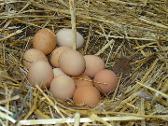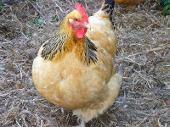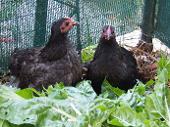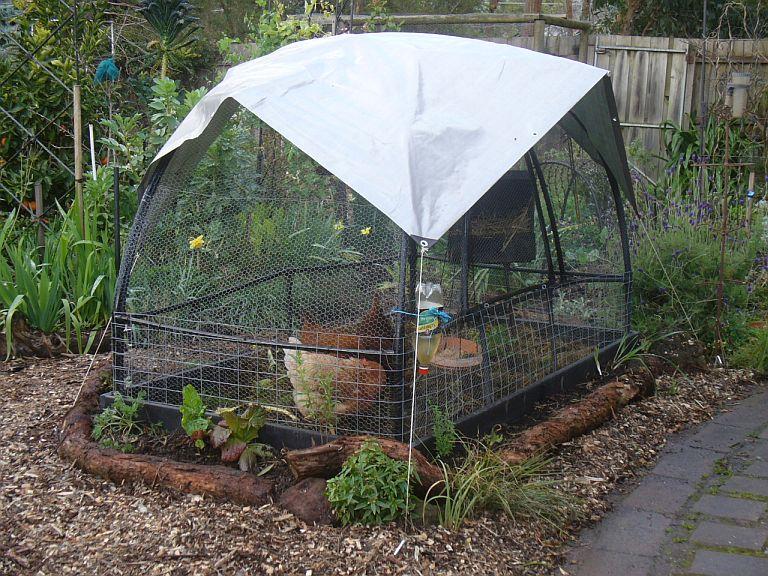Chooks in the garden
They provide fresh eggs and manure. They eat leftovers, gone to seed vegies, snails and weeds.
What they don't eat they scratch around and turn into wonderful soil. They have personality.
They are a wonderful addition to the backyard if you can manage them.



In this garden three hens move from vegie patch to vegie patch - six beds in total - in a lightweight,
movable chook 'dome'. The move to a new patch is always exciting: they demolish any leftover vegies
and scratch around enthusiastically.
Autumn leaves, straw, waste from the local green grocer, weeds and other titbits are added regularly.
After a few weeks, depending on availability of the next vegie bed, they are moved on. The vacated bed
is ready for planting with the next crop - ploughed, fertilised and de-bugged. This experiment has
resulted in prolific and healthy crops.
Six beds isn't quite enough so the girls also do their duty in the two berry cages, and there is a spare
fixed chookyard if needed.

Chook homes need to be fox proof. This 'dome' fits within the vegie bed edging, which in this case is
made from ewood*, a product made form recycled printer cartridges. It doesn't rot or leach into the soil; it
is UV resistant and it cuts like timber. (www.ewood.com.au)
*Note (October 2016): this product may no longer be available unfortunately.
A soft drink bottle with a drip nozzle ensures that the water supply is always clean. Breakfast 'mash'
made from pollard, soy meal, oats and powdered milk is given in a hanging food tray made from a plastic
pot plant saucer.
The nesting box is a hobby box attached to an old stool so the chooks can scratch underneath. And they
have a perch for roosting on at night.
(This idea is adapted from the technique described by Linda Woodrow in 'The Permaculture Home
Garden'.)